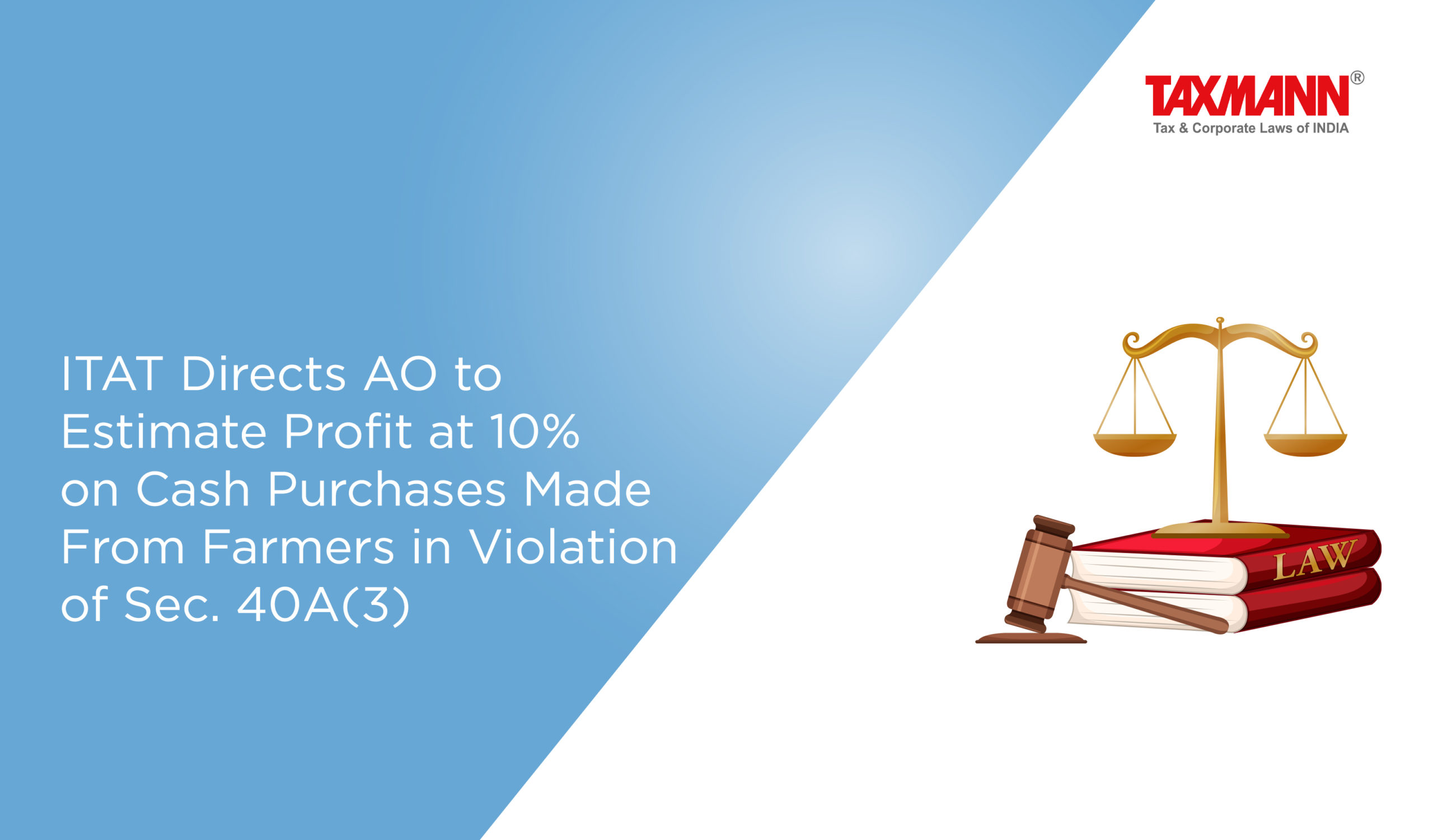ITAT Directs AO to Estimate Profit at 10% on Cash Purchases Made From Farmers in Violation of Sec. 40A(3)
- Blog|News|Income Tax|
- 2 Min Read
- By Taxmann
- |
- Last Updated on 28 August, 2023
Case Details: M. Shyamalanathan & Co. v. Income-tax Officer - [2023] 153 taxmann.com 23 (Chennai-Trib.)
Judiciary and Counsel Details
-
- Mahavir Singh, Vice President
- S. Sridhar, Adv. for the Appellant.
- G. Johnson, Addl. CIT for the Respondent.
Facts of the Case
The assessee was a firm engaged in the business of trading rice. It filed its return of income for the relevant year, and subsequently, a survey under section 133A was conducted on the business premises of the assessee.
During the assessment proceedings, the Assessing Officer (AO) noticed from the purchase bills and printed copies of purchase ledger accounts that the assessee had made payment in cash exceeding Rs. 20,000 for the purchase of rice to a single person in a single day. AO disallowed the cash payments made over Rs. 20,000 by invoking provisions of section 40A(3).
On appeal, CIT(A) upheld the disallowance made by AO. Aggrieved-assessee filed an instant appeal to the Chennai Tribunal.
ITAT Held
The Tribunal held that the assessee was a trader in purchasing rice from rice mills and not from agriculturists directly. Admittedly, the assessee was also not an agent. Even the assessee could not show any business expediency that required to be considered in the light of the exceptions as provided under rule 6DD of the Rules.
The assessee argued that there was fluctuating demand for rice due to a price rise of rice commodities, and the farmers agreed to sell in cash to the rice mills. In turn, the rice mill asked the assessee to make part of the payment for some months in cash.
Assessee claimed that it made 98%of purchases in account payee cheque or bank draft or through banking channel only as envisaged in the provisions of section 40A(3). The compulsion imposed by some of the farmers who wanted their money back from the rice mill reveals that there was business expediency to make cash payments that were a very minimal amount, ranging from 6.92% to 0.28% in various years.
Assessee argued that on the disputed purchase, AO could apply a higher profit rate instead of the profit rate declared by it. The assessee also filed a complete table capturing the facts of disputed addition, total purchases and percentage of disputed purchases.
Thus, an estimation of profit at the rate of 10% of the disputed purchases disallowed by the AO by invoking the provisions of section 40A(3) will meet the ends of justice. This prevents profit distortion and considers commercial expediency in the given facts and circumstances.
List of Cases Referred to
-
- ITO v. Shivaji Hi-Tek Foods (P.) Ltd. [IT Appeal No. 111 (Chny.) of 2020, dated 21-12-2022] (para 7.1)
- DCIT v. Sree Daksha Property Developers India (P.) Ltd. [IT Appeal No.2067 (Chny) 2017, dated 3-5-2023] (para 7.2)
Disclaimer: The content/information published on the website is only for general information of the user and shall not be construed as legal advice. While the Taxmann has exercised reasonable efforts to ensure the veracity of information/content published, Taxmann shall be under no liability in any manner whatsoever for incorrect information, if any.

Taxmann Publications has a dedicated in-house Research & Editorial Team. This team consists of a team of Chartered Accountants, Company Secretaries, and Lawyers. This team works under the guidance and supervision of editor-in-chief Mr Rakesh Bhargava.
The Research and Editorial Team is responsible for developing reliable and accurate content for the readers. The team follows the six-sigma approach to achieve the benchmark of zero error in its publications and research platforms. The team ensures that the following publication guidelines are thoroughly followed while developing the content:
- The statutory material is obtained only from the authorized and reliable sources
- All the latest developments in the judicial and legislative fields are covered
- Prepare the analytical write-ups on current, controversial, and important issues to help the readers to understand the concept and its implications
- Every content published by Taxmann is complete, accurate and lucid
- All evidence-based statements are supported with proper reference to Section, Circular No., Notification No. or citations
- The golden rules of grammar, style and consistency are thoroughly followed
- Font and size that’s easy to read and remain consistent across all imprint and digital publications are applied








 CA | CS | CMA
CA | CS | CMA


